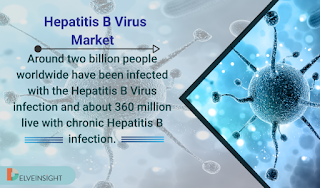Familial Amyloid Polyneuropathy Market: Trends, Insights, and Future Directions
Familial amyloid polyneuropathy (FAP), also known as transthyretin amyloidosis (ATTR), is a rare genetic disorder characterized by the deposition of amyloid proteins in peripheral nerves, leading to progressive neuropathy, autonomic dysfunction, and other debilitating symptoms. As awareness of this condition grows, the market for FAP therapies is expanding, driven by advancements in treatment options and increasing patient populations. This article delves into the current state of the familial amyloid polyneuropathy market, examining trends, challenges, and future prospects.
Current Market Overview
The familial amyloid polyneuropathy market is witnessing significant growth, primarily due to the rising incidence of the disease and the development of innovative therapeutic options. Estimates suggest that the prevalence of ATTR is higher in certain regions, particularly in specific genetic populations, leading to an increased demand for effective treatments.
Key Market Drivers
Increasing Awareness and Diagnosis: Greater awareness among healthcare professionals and patients regarding the symptoms and implications of FAP is contributing to more accurate diagnoses. Enhanced diagnostic techniques, including genetic testing and biomarker identification, are facilitating earlier detection.
Advancements in Treatment Options: The introduction of new therapies, such as disease-modifying treatments and supportive care options, has transformed the management of FAP. These advancements not only improve patient outcomes but also stimulate market growth.
Growing Research and Development: Significant investment in research is leading to a better understanding of the underlying mechanisms of FAP. This research is critical for the development of targeted therapies that can effectively manage the disease.
Government Initiatives and Support: Various government bodies and health organizations are promoting awareness and funding research initiatives aimed at improving the diagnosis and treatment of rare diseases like FAP.
Market Segmentation
The familial amyloid polyneuropathy market can be segmented based on several factors:
Drug Type:
Disease-modifying therapies (e.g., tafamidis, diflunisal)
Supportive treatments (e.g., analgesics, medications for autonomic dysfunction)
Route of Administration:
Oral
Injectable
Geography:
North America
Europe
Asia-Pacific
Latin America
Middle East and Africa
Competitive Landscape
The competitive landscape of the familial amyloid polyneuropathy market includes several key players:
Pfizer Inc.
Alnylam Pharmaceuticals
Ionis Pharmaceuticals
Eisai Co., Ltd.
These companies are at the forefront of developing innovative treatments for FAP, engaging in clinical trials, and pursuing regulatory approvals to enhance their market presence.
Challenges Facing the Market
Despite its promising growth trajectory, the familial amyloid polyneuropathy market faces several challenges:
High Cost of Treatment: The cost associated with novel therapies can be high, posing accessibility issues for patients. This financial burden can limit treatment uptake, particularly in lower-income regions.
Limited Awareness and Expertise: Although awareness is increasing, FAP remains a rare disease, and many healthcare providers may lack the expertise to diagnose and manage it effectively. This can lead to delays in treatment and misdiagnoses.
Regulatory Challenges: Navigating the regulatory landscape for rare diseases can be complex. Companies may face lengthy approval processes, which can slow the introduction of new therapies.
Patient Adherence: Ensuring patient adherence to treatment regimens can be challenging, particularly for those managing chronic conditions like FAP, where long-term commitment is necessary.
Future Outlook
The future of the familial amyloid polyneuropathy market appears bright, with several emerging trends likely to shape its development:
Personalized Medicine: Advances in genomics and biotechnology are paving the way for personalized treatment approaches tailored to individual patients’ genetic profiles. This shift can enhance treatment efficacy and minimize adverse effects.
Increased Focus on Early Diagnosis: Continued efforts to promote awareness and enhance diagnostic capabilities will likely lead to earlier detection and treatment of FAP, improving patient outcomes.
Telehealth and Remote Monitoring: The rise of telehealth services, accelerated by the COVID-19 pandemic, provides opportunities for improved patient monitoring and follow-up care, facilitating better management of chronic conditions like FAP.
Emerging Therapies: Ongoing research and clinical trials are likely to yield new therapies that offer improved efficacy and safety profiles, expanding the options available to patients and healthcare providers.
Conclusion
The familial amyloid polyneuropathy market is poised for substantial growth, driven by increasing awareness, innovative treatment options, and a deeper understanding of the disease. However, challenges such as high treatment costs and limited awareness must be addressed to maximize the market’s potential. As the landscape continues to evolve, collaboration among stakeholders—pharmaceutical companies, healthcare providers, and patient advocacy groups—will be essential in driving advancements in FAP management.
For those seeking comprehensive insights into the familial amyloid polyneuropathy market, including detailed analyses of market trends, competitive landscape, and future projections, DelveInsight’s Familial Amyloid Polyneuropathy Market Report offers valuable information.

Comments
Post a Comment